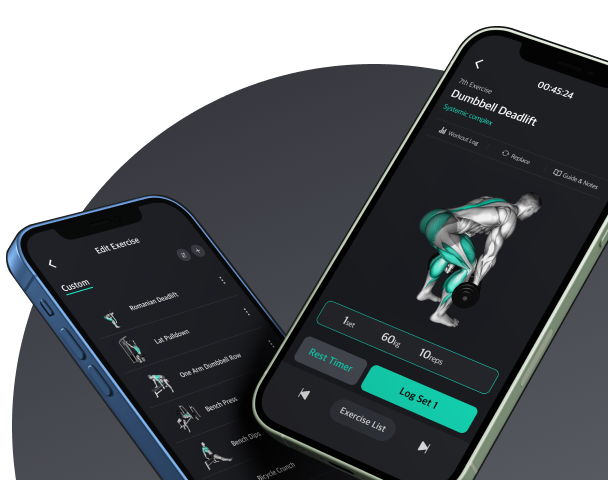Full Squat vs Half Squat: Which One is Better?

When it comes to lower body workouts, squat is often considered the king of exercises. They target multiple muscle groups, improve strength, and enhance overall fitness. However, there is often debate about whether full squat or half squat is more effective. In this article, we will explore the differences between full squat and half squat, the benefits of each, and how to decide which one is suit for you.
Full Squat vs Half Squat: meaning, how to do
What is a Full Squat?
A full squat, also known as a deep squat, means lowering your body until your hips are below your knees. In this form, your thighs are parallel to the ground or even lower. This exercise requires significant flexibility and mobility in the hips, knees, and ankles.
How to Perform a Full Squat:
- Stand with your feet shoulder-width apart.
- Keep your chest up and your core engaged.
- Lower your body by bending your knees and hips, as if you are sitting back into a chair.
- Go down until your hips are below your knees.
- Push through your heels to return to the starting position.
What is a Half Squat?
A half squat means lowering your body only halfway down. In this form, your thighs do not reach parallel to the ground, and your knees form an angle greater than 90 degrees.
How to Perform a Half Squat:
- Stand with your feet shoulder-width apart.
- Keep your chest up and your core engaged.
- Lower your body by bending your knees and hips slightly.
- Stop when your thighs are about halfway to being parallel to the ground.
- Push through your heels to return to the starting position.
Detail squat guide: smith machine, rack
Squat gif
Smith machine squat gif
Full Squat vs Half Squat: muscle work
Muscle work in Full Squats
Full squats are known for their ability to activate a wide range of muscles in the lower body. Here are some of the key muscles worked during a full squat:
- Quadriceps: The muscles at the front of your thighs work hard to extend your knees.
- Hamstrings: Located at the back of your thighs, these muscles help in hip extension and knee flexion.
- Glutes: Your buttock muscles are heavily involved in extending the hips.
- Adductors: These inner thigh muscles assist in stabilizing your legs.
- Calves: The muscles in your lower legs support your movement and balance.
Muscle work in Half Squats
Half squats also target the lower body muscles but to a slightly lesser extent compared to full squats. The primary muscles worked during half squats include:
- Quadriceps: These muscles are still the main focus, but the range of motion is less.
- Hamstrings: They are engaged, but not as intensely as in full squats.
- Glutes: These muscles are activated but to a lesser degree.
- Calves: They provide support and balance.

Benefits of Full Squats
Greater Muscle Worked
Full squats engage more muscles throughout the entire range of motion. This leads to better overall muscle development and strength.
Improved Flexibility
Performing full squats regularly can improve flexibility in your hips, knees, and ankles. This increased flexibility can help prevent injuries and enhance performance in other exercises.
Functional Strength
Full squats mimic many everyday movements, such as sitting down and standing up. This makes them excellent for building functional strength that translates to daily activities.
Benefits of Half Squats
Easier to Perform
Half squats require less flexibility and mobility, making them more accessible for beginners or those with joint issues.
Reduced Stress on Joints
By not going as deep, half squats put less stress on the knees and hips. This can be beneficial for individuals with joint pain or previous injuries.
Focused Muscle Development
Half squats allow you to target specific muscles, such as the quadriceps, more directly. This can be useful for building strength in particular areas.
Full Squat vs Half Squat: Which is Better?
Consider Your Goals
When deciding between full squats and half squats, consider your fitness level and goals. If you aim to build overall strength and muscle, improve flexibility, and enhance functional fitness, full squats may be the better choice. However, if you are a beginner, have limited mobility, or want to focus on specific muscle groups, half squats might be more suitable.
Safety and Form
Regardless of which type of squat you choose, maintaining proper form is crucial to avoid injury. Keep your chest up, core engaged, and ensure your knees do not extend past your toes. Start with lighter weights to master the technique before gradually increasing the load.
Incorporating Both
For a well-rounded lower body workout, consider incorporating both full squats and half squats into your routine. This approach allows you to enjoy the benefits of both exercises, leading to balanced muscle development and improved overall fitness.
Conclusion

In the debate of full squat vs half squat, there is no one-size-fits-all answer. Both exercises have their unique benefits and depending on your individual needs and goals. By understanding the differences and benefits of each, you can make an informed decision and create a workout plan that suits you best. Remember, the most important aspect of any exercise routine is consistency and proper form.



